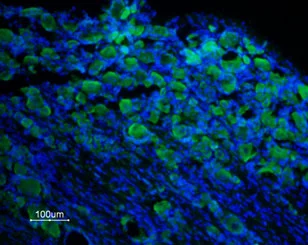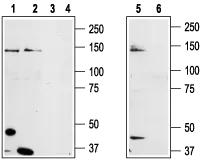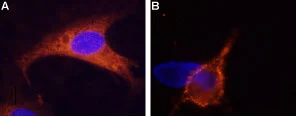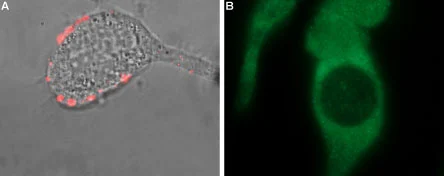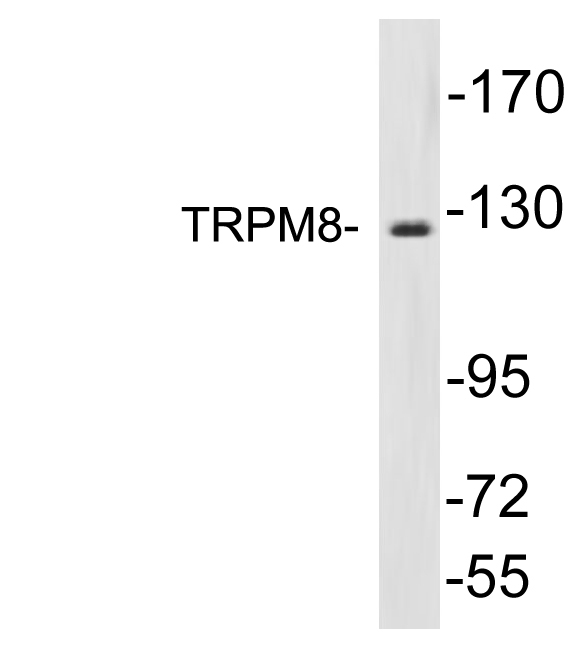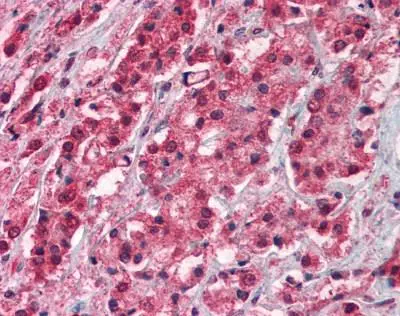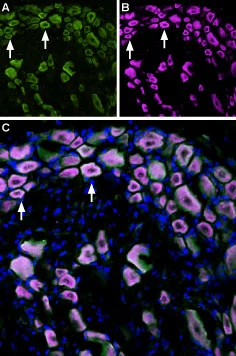
IHC-Fr analysis of rat DRG tissue using GTX54866 TRPM8 antibody. Cell nuclei were stained with DAPI (blue). Panel A : TRPM8 labeling (green). Panel B : The same section was then labeled for TrkA (purple). ? Panel C : Merge of A and B demonstrates co-localization of TRPM8 and TrkA in rat DRG (arrows). Dilution : 1:300
TRPM8 antibody
GTX54866
ApplicationsImmunoFluorescence, ImmunoPrecipitation, Western Blot, ImmunoCytoChemistry, ImmunoHistoChemistry, ImmunoHistoChemistry Frozen, ImmunoHistoChemistry Paraffin, Neutralisation/Blocking, Other Application
Product group Antibodies
TargetTRPM8
Overview
- SupplierGeneTex
- Product NameTRPM8 antibody
- Delivery Days Customer7
- ApplicationsImmunoFluorescence, ImmunoPrecipitation, Western Blot, ImmunoCytoChemistry, ImmunoHistoChemistry, ImmunoHistoChemistry Frozen, ImmunoHistoChemistry Paraffin, Neutralisation/Blocking, Other Application
- CertificationResearch Use Only
- ClonalityPolyclonal
- Concentration0.8 mg/ml
- ConjugateUnconjugated
- Gene ID79054
- Target nameTRPM8
- Target descriptiontransient receptor potential cation channel subfamily M member 8
- Target synonymsLTRPC6, LTrpC-6, TRPP8, trp-p8, transient receptor potential cation channel subfamily M member 8, TRPM8 cationic channel, transient receptor potential p8, transient receptor potential subfamily M member 8
- HostRabbit
- IsotypeIgG
- Protein IDQ7Z2W7
- Protein NameTransient receptor potential cation channel subfamily M member 8
- Storage Instruction-20°C or -80°C,2°C to 8°C
- UNSPSC12352203
References
- Liu Q, Lei X, Cao Z, et al. TRPM8 deficiency attenuates liver fibrosis through S100A9-HNF4α signaling. Cell Biosci. 2022,12(1):58. doi: 10.1186/s13578-022-00789-4Read this paper
- Zhang Y, Su Q, Lian Y, et al. Botulinum toxin type A reduces the expression of transient receptor potential melastatin 3 and transient receptor potential vanilloid type 4 in the trigeminal subnucleus caudalis of a rat model of trigeminal neuralgia. Neuroreport. 2019,30(10):735-740. doi: 10.1097/WNR.0000000000001268Read this paper

